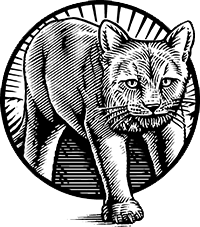It can be assumed that many of us have faced racism to various degrees at various points in our lives. Some might come on the employment front. According to a 2023 Pew Research Center survey, 41% of Black workers faced discrimination in hiring, pay and promotion due to their race, compared to 8% of white workers.
Or it could be found on the housing front. In a 2024 Zillow survey, 69% of Black respondents and 64% of Hispanic and Latino respondents reported experiencing some forms of housing discrimination.
Incidences of discrimination still prevail, covertly and overtly. This highly sensitive topic might stir up emotions or might unravel memories due to bad experiences incurred. In fact, one of the questions that we keep going back to, and trying to examine, is whether racism is innate or taught.
Why does racism still continue to prevail in our society, covertly and overtly? The intent here is to answer these questions analytically, and hopefully not cause any discomfort to readers, while also calling for introspection. One needs perspective to consider interactions with fellow beings and to become an exemplar of how we want to be treated by others across all settings.
There are various types of racism, which one might be conscious of or not aware of, which may be intentional or unintentional. Discrimination can be based on skin, power, class, socio-economic status, languages, gender, religions practiced, roots of origin and various attributes—all of which get carried from person to person, to a community and then to the larger society with time.
This further compels us to ask ”why?”
Upon introspection it becomes clear that the attributes of racism are built into us, or in other words it is a very human instinct that was in play even before human beings identified it. It is a part of evolution. The predatory or the dominating nature—of the powerful over the weak, rich over the poor, higher status over the lower status, higher caste over the lower caste, abled over the disabled, etc.—is natural. It is passed on from generations to generations, continuing to manifest from innate to taught, learned when not checked on time. If and when the conditions of dualism crop up, the tendency to dominate upticks and eventually the weaker side would get dominated.
However, human beings are also endowed with humane values and reason, which distinguishes them from animals. Human beings can let humane values lead over the predatory/dominative nature in their interactions with their fellow beings. This could ameliorate the bad experiences (hatred, prejudices, indignity, etc.) or oppression of various types.
To recap, racism is an outcome of both innate human tendencies and learned behaviors, amplified and perpetuated by societal structures, attitudes and cultural factors. There are a number of types of racism due to skin, culture, socio-economic status, countries of origin, faith practiced, gender biased, languages and other aspects which continue to prevail in our societies. Upon introspection it is clear that the instinct to dominate is built in us as a part of evolution.
At the same time human beings are endowed with humane values and a discriminative mindset that distinguishes us from animals. Unfortunately, the dreadful experiences of racism from our previous generations have left a lasting impact that gets carried even today, that cannot be undone, but hopefully exercising introspection during our interactions with our fellow beings could ameliorate oppressive and other negative experiences from now on.
We get shaped through our own experiences and the community we live in. Each one of us gets impacted through our words and deeds. We as people did do our part today so that our next generations don’t have to carry and face that brunt of it. This responsibility falls on each one of us to be a better version of ourselves and build a better society, for a better tomorrow collectively.










